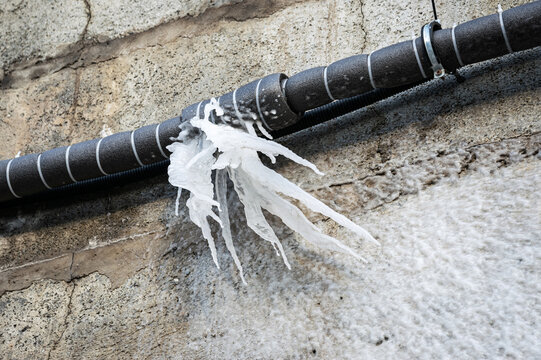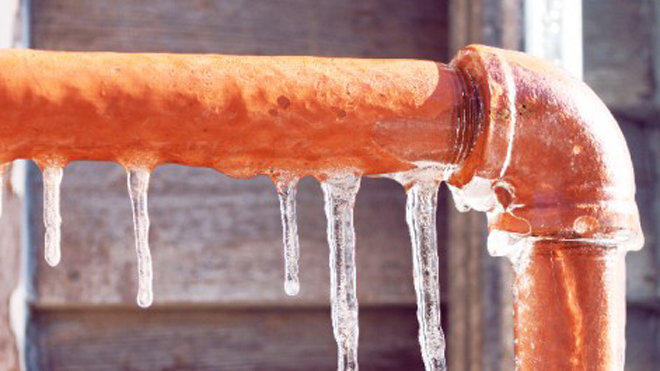Preventing Pipes from Freezing: Best Strategies
Preventing Pipes from Freezing: Best Strategies
Blog Article
How do you actually feel with regards to Preventing and dealing with frozen pipes?

Winter can ruin your plumbing, especially by freezing pipes. Here's how to stop it from taking place and what to do if it does.
Intro
As temperature levels decline, the risk of icy pipelines rises, potentially causing expensive fixings and water damage. Understanding just how to stop icy pipes is critical for house owners in chilly environments.
Avoidance Tips
Insulating prone pipes
Cover pipelines in insulation sleeves or make use of warm tape to safeguard them from freezing temperatures. Concentrate on pipelines in unheated or external locations of the home.
Heating strategies
Keep interior areas sufficiently heated, specifically locations with plumbing. Open cupboard doors to allow cozy air to flow around pipes under sinks.
Exactly how to determine frozen pipes
Look for decreased water circulation from taps, uncommon odors or noises from pipes, and visible frost on revealed pipes.
Long-Term Solutions
Architectural adjustments
Think about rerouting pipes away from exterior wall surfaces or unheated areas. Add extra insulation to attic rooms, basements, and crawl spaces.
Upgrading insulation
Invest in premium insulation for pipelines, attic rooms, and wall surfaces. Appropriate insulation aids maintain constant temperatures and minimizes the threat of icy pipes.
Safeguarding Outdoor Pipes
Garden tubes and exterior faucets
Disconnect and drain pipes yard hoses before winter season. Mount frost-proof faucets or cover exterior faucets with shielded caps.
Comprehending Frozen Pipelines
What triggers pipelines to freeze?
Pipes freeze when revealed to temperatures below 32 ° F (0 ° C) for extended periods. As water inside the pipes ices up, it expands, taxing the pipeline wall surfaces and possibly creating them to burst.
Threats and damages
Frozen pipelines can result in supply of water interruptions, building damage, and costly repair work. Ruptured pipelines can flood homes and create comprehensive architectural damages.
Signs of Frozen Pipes
Determining icy pipes early can avoid them from breaking.
What to Do If Your Pipelines Freeze
Immediate activities to take
If you think frozen pipes, maintain taps open up to alleviate pressure as the ice thaws. Use a hairdryer or towels taken in hot water to thaw pipes slowly.
Verdict
Avoiding icy pipes calls for aggressive steps and quick responses. By recognizing the reasons, indicators, and safety nets, property owners can shield their pipes during winter.
6 Proven Ways to Prevent Frozen Pipes and Protect Your Home
Disconnect and Drain Garden Hoses
Before winter arrives, start by disconnecting your garden hoses and draining any remaining water. Close the shut-off valves that supply outdoor hose bibs and leave the outdoor faucet open to allow any residual water to drain. For extra protection, consider using faucet covers throughout the colder months. It’s also important to drain water from any sprinkler supply lines following the manufacturer’s directions.
Insulate Exposed Pipes
Insulating your pipes is an effective way to prevent freezing. Pipe insulation is readily available at home improvement stores and is relatively inexpensive. Pay close attention to pipes in unheated areas such as the attic, basement, crawl spaces, or garage. Apply foam insulation generously to create a buffer against the cold. You can also wrap your pipes in heat tape or thermostat-controlled heat cables for added warmth.
Seal Air Leaks
Inspect your home for any cracks or openings that could let in cold air. Seal any holes around the piping in interior or exterior walls, as well as the sill plates where your home rests on its foundation. Additionally, make sure to keep your garage door closed unless you’re entering or exiting. Leaving it open creates a significant air leak that can lead to frozen pipes.
Allow Warm Air Circulation
During cold snaps, it’s essential to allow warm air to circulate evenly throughout your home. Leave interior doors ajar to promote better airflow. Open kitchen and bathroom cabinets to help distribute heat consistently around the rooms. If you have small children or pets, be sure to remove any household chemicals or potentially harmful cleaners from open cabinets for safety.
Let Faucets Drip
A small trickle of water can make a big difference in preventing ice formation inside your pipes. When temperatures drop significantly, start a drip of water from all faucets served by exposed pipes. This continuous flow helps prevent the water from freezing. Additionally, running a few faucets slightly can relieve pressure inside the pipes, reducing the chances of a rupture if the water inside does freeze.
https://choateshvac.com/6-proven-ways-to-prevent-frozen-pipes-and-protect-your-home/

Do you appreciate reading up on How to Prevent Your Pipes From Freezing? Put a short review down below. We will be pleased to know your suggestions about this post. In hopes that you come back again soon. Are you aware of somebody else who is interested by the topic? Why not promote it. Thanks for being here. Don't forget to check up our website back soon.
Or Book Technician Here Report this page